 FEEDBACK: She said WHAT? Read what people think about our Classical Music Daily features, and have your say!
FEEDBACK: She said WHAT? Read what people think about our Classical Music Daily features, and have your say!
- Meridian Records
- Kevin Raftery
- Leonardo Vinci
- Larry Lake
- Martin Graham
- Raphael Wallfisch
- Masterworks Chorus of the Palm Beaches
- Laurence Flower: Melancolie
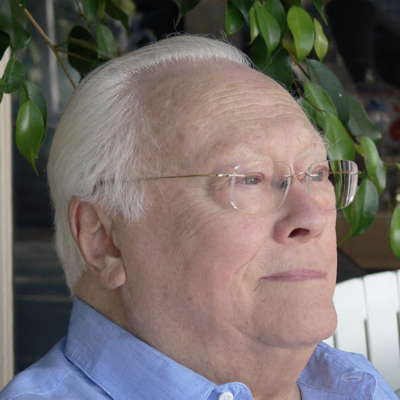 VIDEO PODCAST: Find out about composers from unusual places, including Gerard Schurmann, Giya Kancheli, Nazib Zhiganov and Nodar Gabunia, about singing in cars, and meet Jim Hutton from the RLPO and some of our regular contributors.
VIDEO PODCAST: Find out about composers from unusual places, including Gerard Schurmann, Giya Kancheli, Nazib Zhiganov and Nodar Gabunia, about singing in cars, and meet Jim Hutton from the RLPO and some of our regular contributors.
A Christmas 'Don Quixote'
GIUSEPPE PENNISI recommends a visit to the ballet
In Rome, ballet is alive and well during the Christmas period. At least three theaters are engaged with ballet, and it is also a tradition of Teatro dell'Opera di Roma. Last year - it will be remembered - the usual Nutcracker by Pyotr Ilyich Tchaikovsky was on stage (reviewed in this magazine on 28 December 2021). This season a title that has often appeared in recent seasons, Don Quixote by Ludwig Minkus, was chosen, but with a largely new staging thanks to Francesco Zito and Antonella Conte's beautiful sets and elegant costumes. They take us into a fairytale world with Vinicio Cheli's bright colors and beautiful lights. The show is repeated almost every night until 31 December 2022 (when it begins at 6pm, to allow the public to participate in New Year's Eve dinners and balls after an evening at the Opera House).
Don Quixote has a particular story. It belongs to the late romantic genre. (The first version is from 1870, but the current version dates back to 1871.) It was conceived by Marius Petipa, who then made good and bad weather in the field of dance in the Imperial Theaters of Tsarist Russia. Petipa choreographed it with Alexander Gorgsky. Minkus was commissioned to write the music. He was born in what is now the Czech Republic but then part of the Austro-Hungarian Empire. He went to Vienna as a child and became one of the court musicians in St Petersburg from 1869 to 1891, when he returned to Vienna where, now elderly, he had little professional fortune and died in poverty because the Soviet revolutionary government took away his pension. His numerous ballets have always been in repertoire in the USSR and now in the Russian Federation, but they did not arrive in the West until 1961 when, at the Parisian airport of Le Bouget, Rudolf Nureyev asked for political asylum. However, the grand Act III pas de deux was well-known because George Balanchine, who was born in St Petersburg but fled to the West when young, had included it in the repertoire of New York City Ballet.
Today Don Quixote, with La Bayadère, is one of the two most performed ballets by Minkus. It is in the repertoire of the Royal Ballet and the Teatro alla Scala in the updated version by Nureyev as well as of the American Ballet Theatre in the version prepared by Mikhail Baryshnikov. Recently, Alexey Ratmansky, one of the most appreciated choreographers of the younger generation, has prepared a very modern edition for Amsterdam's National Ballet. Thus, even if Minkus remains an eclectic composer and is considered almost a craftsman, it is fine stuff. Don Quixote, in particular, can compete with Tchaikovsky's three great ballets.
The Don Quixote production proposed by Teatro dell'Opera di Roma is very different from those of the recent past, based on Gorgsky's choreography. The choreography is by Laurent Hilaire; in turn, this is based on that by Mikhail Baryshnikov for the American Ballet Theatre. It is very dynamic and athletic. The ballet's libretto has little to do with the spirit of Cervantes' novel. There is the battle against windmills, but the plot - the contrasted love story of the young Kitri and Basilio, intertwined with the daring adventures of Don Quixote and his squire, Sancho Panza - is essentially a pretext to juxtapose Spanish music - castanets and bolero - with neoclassical music and memories of Vienna. It is funny not melancholic like other works inspired by Cervantes (including the opera by Massenet).
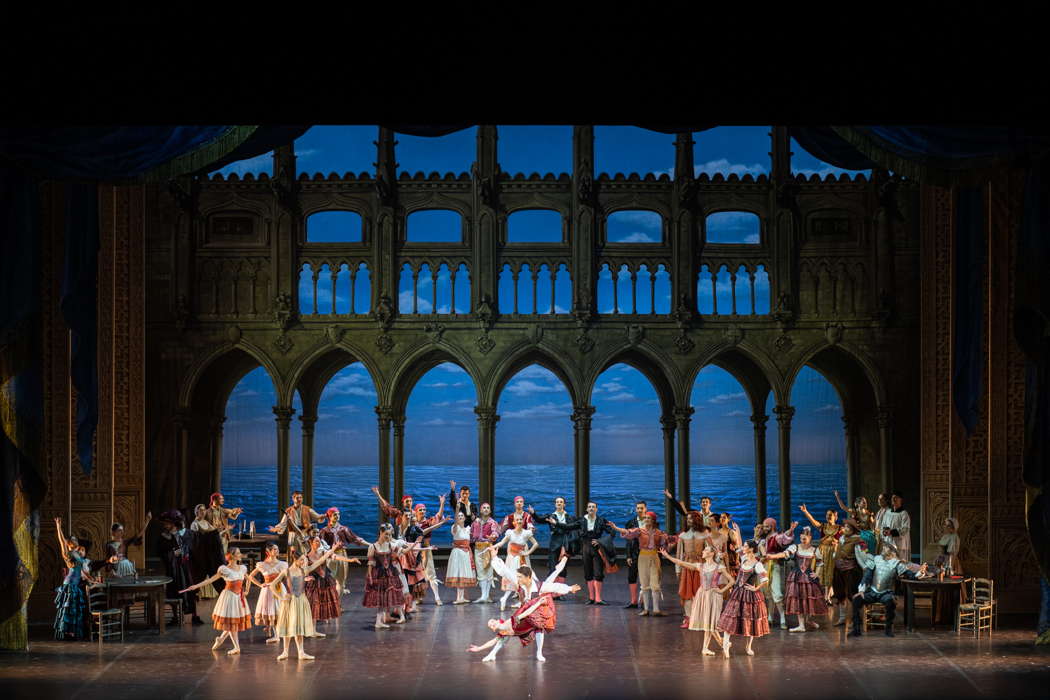
A scene from Opera di Roma's production of Don Quixote by Ludwig Minkus. Photo © 2022 Fabrizio Sansoni
Three casts alternate. On the evening of the premiere, 18 December 2022, the two protagonists were very good - Isabella Boylston in the role of Kitri and Daniel Camargo as Basilio.
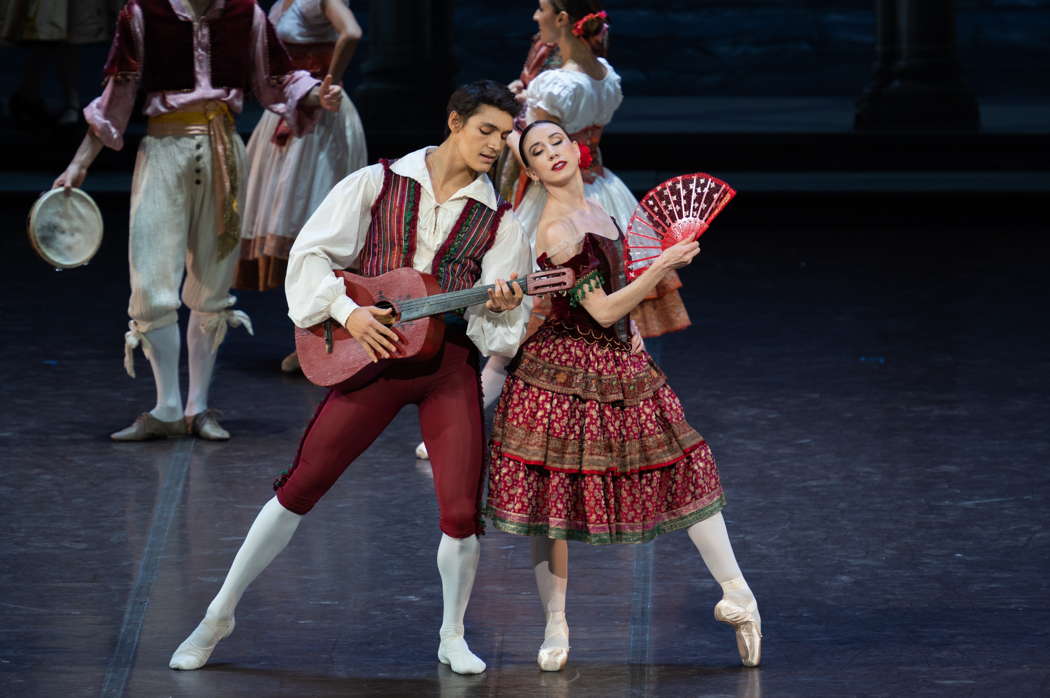
Isabella Boylston as Kitri and Daniel Camargo as Basilio in Opera di Roma's production of Don Quixote by Ludwig Minkus. Photo © 2022 Fabrizio Sansoni
All of the minor characters and especially the corps de ballet - notably in the scenes of Don Quixote's dream and the wedding party in the village - were very good, to a great extent, thanks to the renewal made in recent years by Eleonora Abbagnato.
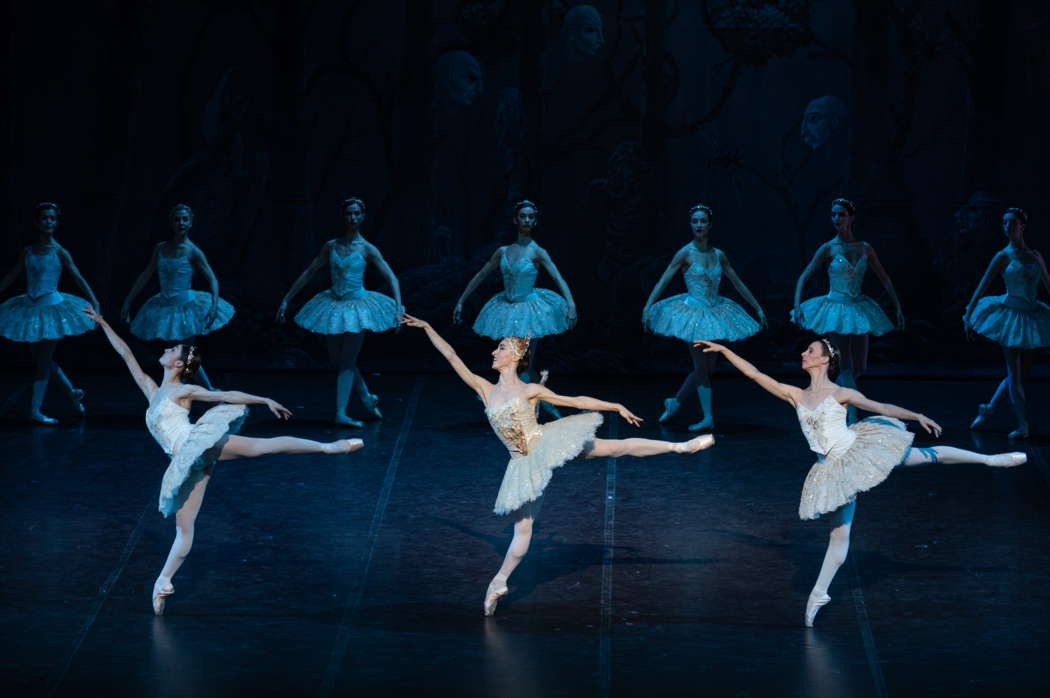
Marta Marigliani as Amore with Beatrice Foddi, Federica Maine and members of the corps de ballet in Opera di Roma's production of Don Quixote by Ludwig Minkus. Photo © 2022 Fabrizio Sansoni
Why not transform the ballet of the Opera di Roma, which has now surpassed in quality that of La Scala, into a national formation - like the British Royal Ballet or the American Ballet of the United States - and give it the task of showing the excellence of dance in other cities too?
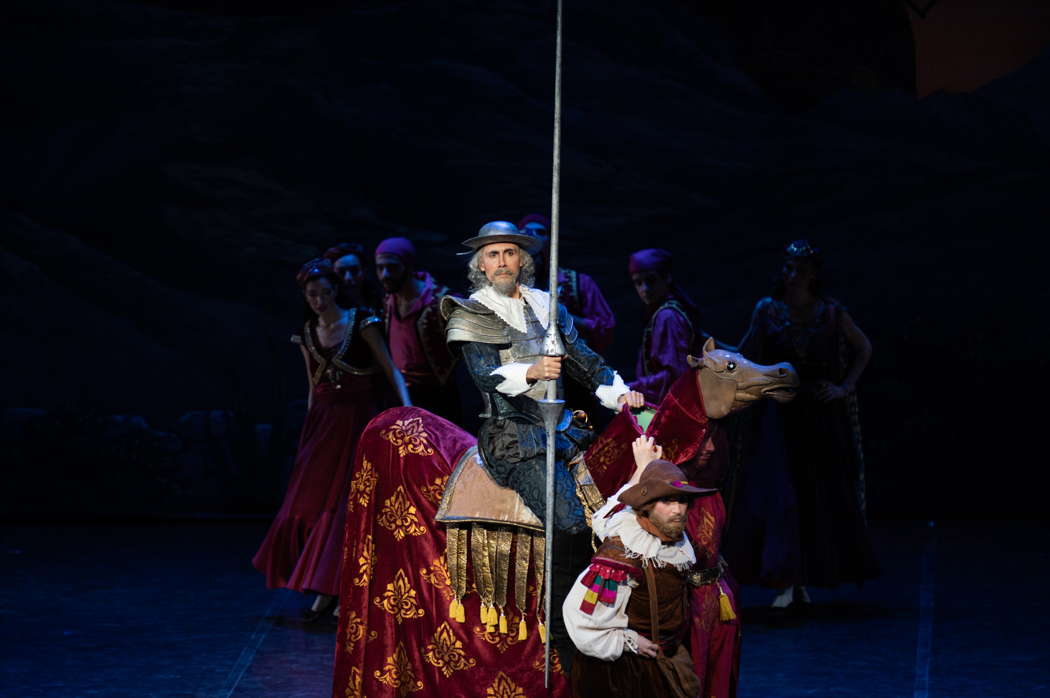
Damiano Mongelli in the title role of Opera di Roma's production of Don Quixote by Ludwig Minkus. Photo © 2022 Fabrizio Sansoni
One last point for those interested in the score more than in the choreographic part: it is important to underline that conductor David Garforth performs the critical edition he prepared about seven years ago to eliminate all the additions and changes added in the performance practices of almost one hundred and forty years. The Intermezzo is particularly recommended.
There were fifteen minutes of accolates and ovations in a sold out theatre.
Copyright © 20 December 2022
Giuseppe Pennisi,
Rome, Italy

CLASSICAL MUSIC ARTICLES ABOUT ROME


